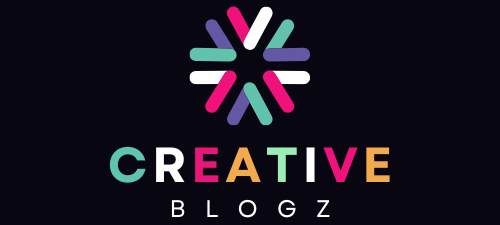In the ever-evolving fashion world, few brands have as explosive an impact as Shein. Known for trendy, affordable clothing and lightning-fast product turnover, Shein has established itself as a dominant force in the global fashion landscape. Whether you’re scrolling through Instagram, discovering TikTok trends, or simply looking to refresh your wardrobe on a budget, you’ve probably noticed Shein. The brand enjoys enormous popularity, especially among Generation Z and Millennials, due to its wide variety of styles, low prices, and convenient online access.
This blog post explores in detail what makes Shein a cultural phenomenon—from its massive product range to its social media presence—while also highlighting the brand’s comprehensive influence on fashion, consumer behavior, and sustainability.
Shein's Unparalleled Product Range
One of the main reasons for Shein’s success is its enormous product variety. With thousands of new items added to the website weekly, Shein ensures there’s something for every taste and fashion preference. Whether it’s chic party dresses, comfortable loungewear, trendy accessories, or home decor, Shein has it all. The brand’s ability to produce such a diverse product range at breathtaking speed is what makes it so appealing.

Unlike traditional retailers that follow seasonal fashion cycles, Shein operates with a real-time production model. By closely monitoring online trends and analyzing customer behavior, the brand can quickly identify what’s popular and bring it to market within days. This agility allows Shein to stay ahead of the curve and consistently offer products that reflect the latest fashion trends.
Affordability and Accessibility
Shein’s low prices are another major draw for customers. At a time when inflation and rising living costs are making luxury purchases more difficult, Shein’s budget-friendly offerings offer an affordable alternative for fashion enthusiasts who want to experiment with different looks without breaking the bank. A complete Shein outfit—including shoes and accessories—often costs less than a single piece from a mid-range retailer, making it an attractive option for those seeking optimal value.
Shein’s affordable price also makes it a popular choice for students, young professionals, and anyone looking to refresh their wardrobe on a budget. With regular promotions, discount codes, and flash sales, Shein enhances its value proposition, encouraging customers to make repeat purchases and discover new styles.
The Online Shopping Experience
As a pure online retailer, Shein has optimized its digital shopping experience to make it as seamless and user-friendly as possible. The brand’s website and mobile app are intuitively designed, allowing customers to easily browse categories, filter products by size and color, and access detailed product descriptions and reviews. High-quality images and videos give customers a clear impression of the look and fit of items, reducing the guesswork often associated with online shopping.

Shein also uses social proof to build trust and enhance the shopping experience. Customers are encouraged to leave reviews, upload photos of themselves in products, and share styling tips. This creates a sense of community and helps others make informed purchasing decisions. This focus on user-generated content has contributed significantly to Shein’s credibility and customer loyalty.
Social Media Dominance
Shein’s rise is largely due to its skillful use of social media. The brand has mastered the art of digital marketing, collaborating with influencers, launching viral challenges, and interacting directly with customers on platforms such as Instagram, TikTok, and YouTube. From “Shein Hauls” showcasing large clothing orders to styling videos and try-on sessions, Shein has become a fixture in the online fashion ecosystem.
By collaborating with influencers and micro-influencers, Shein has been able to reach diverse audiences and promote its products in an authentic and approachable way. The brand’s social media presence not only drives traffic to its website but also creates a sense of excitement and urgency around the latest products, encouraging customers to shop quickly before items sell out.
Sustainability Concerns and Ethical Considerations
Shein’s affordable prices and trend-driven approach have earned the brand millions of loyal customers, but the brand has also been criticized for its environmental and ethical practices. Fast fashion, by its very nature, is associated with overproduction, waste, and labor issues, and Shein’s high product turnover raises questions about the sustainability of its business model.

In response to these concerns, Shein has taken steps to reduce its environmental impact. The brand has implemented waste-reduction initiatives, such as eco-friendly packaging, and has committed to improving the transparency of its supply chain and manufacturing processes. However, critics argue that more substantial changes are needed to align Shein’s practices with the principles of sustainable fashion.
For consumers who value ethical shopping, Shein’s approach to sustainability remains a key consideration. While the brand’s low prices and extensive product range are undeniably attractive, it’s important to weigh these benefits against the broader impacts of fast fashion on the planet and the people involved in the production process.
Conclusion: Shein's Impact on Fashion and Consumer Culture
Shein’s meteoric rise to the top of the fast-fashion world is a testament to the company’s ability to adapt, innovate, and meet the ever-changing preferences of modern consumers. Through trendy, affordable clothing and harnessing the power of social media, Shein has transformed fashion shopping behavior, making it easier than ever to experiment with different styles and stay up-to-date with the latest trends.
However, the brand’s success also highlights some of the challenges and compromises associated with fast fashion, particularly regarding sustainability and ethical considerations. As Shein evolves and expands its global presence, it will be interesting to see how the company balances the demands of rapid growth with the need for greater transparency, accountability, and environmental responsibility.


Add a Comment